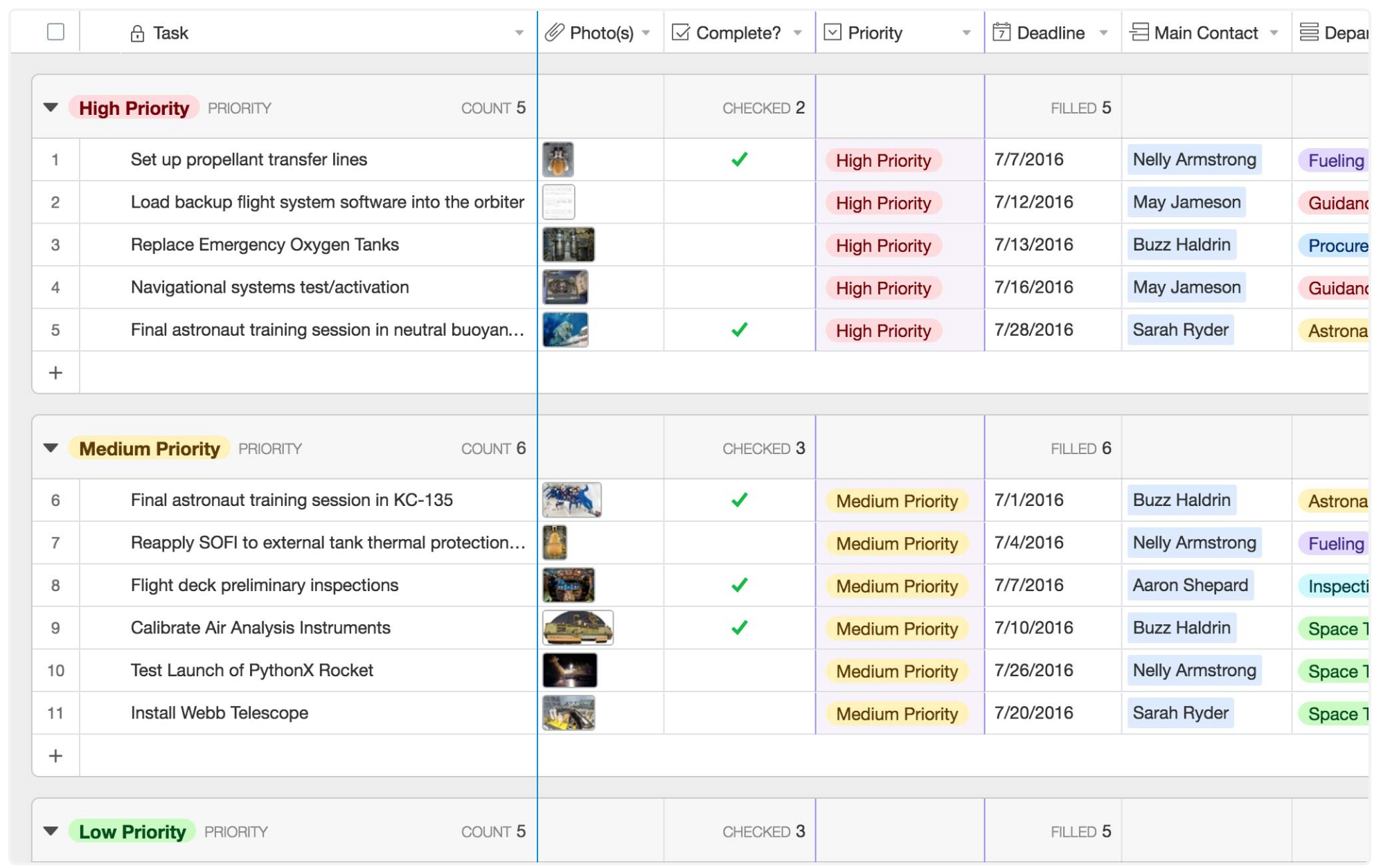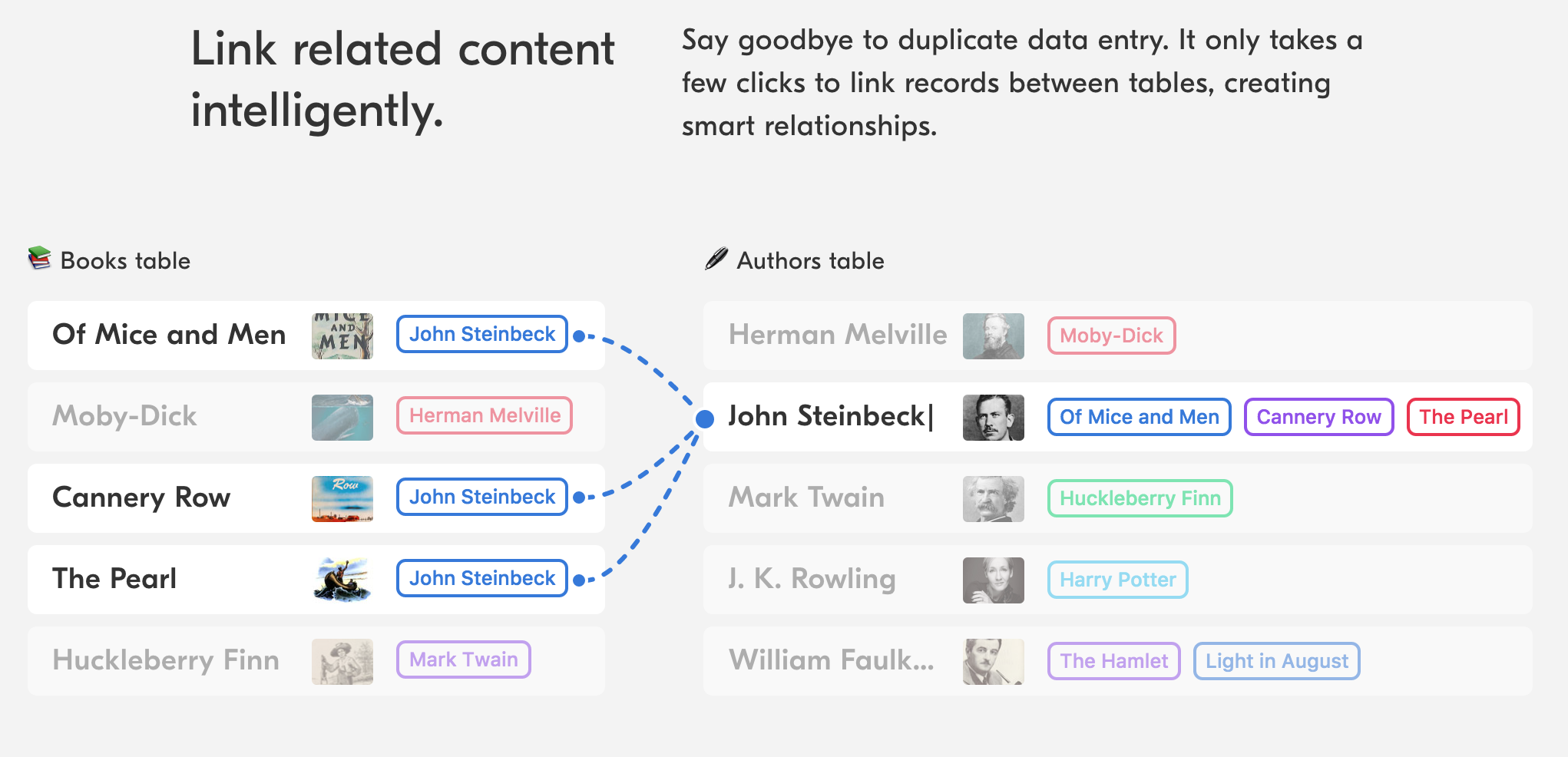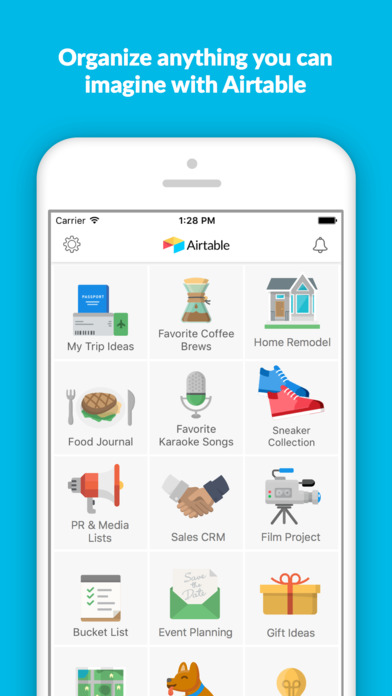Every event coordinator knows that organization is the key to success. While the spreadsheet has been the go-to option for many, it lacks the ability to manage feature rich content. However, creating a new database for every event is not a plausible solution, until now.
Meet Airtable, the spreadsheet with the power of a relational database. Instead of managing rows and columns of inflexible data, you can create a full-featured experience that connects the information you need in a user-friendly way. If you are looking for a new way to plan your event, Airtable deserves a serious look.
More than Just a Spreadsheet
 Airtable presents itself in the familiar grid format commonly associated with spreadsheets. Information is sorted into groups, referred to as Bases. You have the ability to create multiple tabs within a Base, allowing multiple tables of data to be stored in a centralized place. Filtering and sorting options are available, as well as the ability to designate the kind of information stored in the fields, just like a spreadsheet. But that is where the comparison ends.
Airtable presents itself in the familiar grid format commonly associated with spreadsheets. Information is sorted into groups, referred to as Bases. You have the ability to create multiple tabs within a Base, allowing multiple tables of data to be stored in a centralized place. Filtering and sorting options are available, as well as the ability to designate the kind of information stored in the fields, just like a spreadsheet. But that is where the comparison ends.
Instead of having multiple independent tabs, you have the ability to connect records between tables. For example, if your event involves multiple presentation spaces, your first tab can list pertinent information about each room. This can include the room name, maximum seating capacity, and photo attachments. In a second tab, you can create an event schedule for each space. Then, by linking the name of the space with the corresponding schedule in the second table, you can view the schedule information with a simple click from your main page.
Collaborate with Ease
 Taking a cue from some of the best collaboration software available, Airtable allows you to add participants or collaborators with ease and assign roles to each member of your team.
Taking a cue from some of the best collaboration software available, Airtable allows you to add participants or collaborators with ease and assign roles to each member of your team.
For example, you can restrict a person to Read-Only status, or give key members the ability to edit fields. Full creation privileges, allowing the user to create new tables as required, are an option, as well as the capacity to transfer the ownership of the database to whoever is leading that particular activity.
Collaboration efforts are in real-time, allowing team members to view changes as they happen. This happens even if multiple team members are making changes simultaneously. If a field is being edited, the team member’s picture is displayed in the record with which they are interacting. This allows everyone to see which fields are being changed, and by whom.
Full Integration
 Unless you are starting your event planning from scratch, you already have data collected. Airtable doesn’t expect you to key in that data again. Instead, full spreadsheets can be imported directly into the system. This includes spreadsheets from Excel, Google Sheets, and CSV files. If you have a current Microsoft Access database, that can be imported as well in a manner of minutes.
Unless you are starting your event planning from scratch, you already have data collected. Airtable doesn’t expect you to key in that data again. Instead, full spreadsheets can be imported directly into the system. This includes spreadsheets from Excel, Google Sheets, and CSV files. If you have a current Microsoft Access database, that can be imported as well in a manner of minutes.
For teams that use Slack, Airtable is designed to provide a seamless experience across the platforms. Changes to a Base will post as an update in Slack, allowing team members another way to stay apprised of changes as they occur.
Integration options are also available for many popular tools including, email, Dropbox, and Google.
Coordinate with Attendees
Up until this point, the focus has been on how Airtable can help you and your team. But that is just the tip of the iceberg.
For streamlined event management, you can send potential attendees an RSVP notification. A custom URL links to a form, one that you create to capture the data you require, such as the attendee name, whether the invitation is accepted or declined, and the number of attendees in the party. Attendees don’t have to be members of Airtable to respond, and their answers are imported directly into the specified Base as they are submitted.
From there, you can even create a tab to manage seating charts based on the information being provided in the responses. Airtable can calculate the number of people seated at each table, helping you organize the event more efficiently and avoiding simple math errors. If a meal is served, you can take meal requests through the RSVP.
Mobile App for Easy Access On-the-Go
 No matter how robust the services may be, it won’t do you any good if they aren’t portable. Airtable provides seamless access between the web interface and mobile app. This allows you to keep your data in the palm of your hand as the event progresses.
No matter how robust the services may be, it won’t do you any good if they aren’t portable. Airtable provides seamless access between the web interface and mobile app. This allows you to keep your data in the palm of your hand as the event progresses.
The mobile app provides all of the capability of the web interface. You have the ability to make changes, create new Bases, or easily review schedules and seating plans. Files can be attached, and tables can be shared, allowing you to get the right information into the hands of those who need it.
The Bottom Line
Airtable brings a level of functionality that puts other spreadsheets to shame. By allowing users to easily create relational databases, and presenting them in a format that is familiar to many, Airtable can help streamline the planning of any event, regardless of the size. And considering that the basic Airtable offering is free, it’s hard to think of a reason not to give it a try.
Catherine Reed
Latest posts by Catherine Reed (see all)
- Increase Your Event’s Social Presence by Creating Photo-Worthy Moments - March 6, 2020
- How to Make the Most of Content Production Opportunities at Events - March 3, 2020
- Is Your WiFi Ready for Live-Streaming? - April 25, 2019

